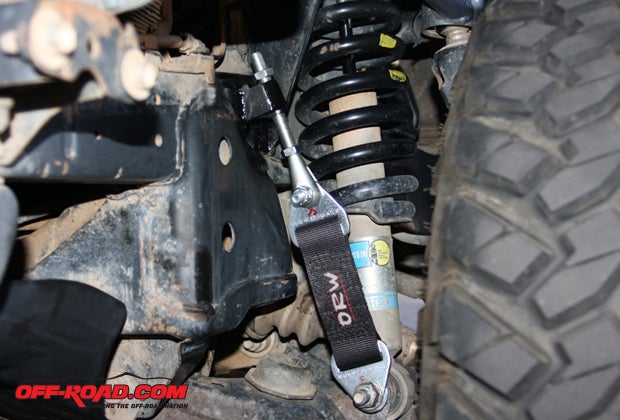
Consider the average trail rig’s suspension – a collection of parts, many OE-based, modified as necessary, working “right” until something goes wrong. What are you doing to protect those suspension components and their affiliated bits, be they shocks, brake lines, half-shafts, or other expensive parts? In particular, what are you doing to protect the complex workings of independent suspension parts? Would you run your rig on-trail with the bump-stops removed? Why protect yourself only at full compression? Limiting straps – affordable and effective – can bookend the function of bump-stops to guard against painful full-droop moments that put suspension parts at risk.
We visited the “We do off-road” guys at Off-Road Warehouse in El Cajon, CA, to dig deeper into the thought process powering the growing use of limit-straps. What’s the logic that could put something – typically seen only on serious race and crawlers – on multipurpose and daily-driven four-wheelers?
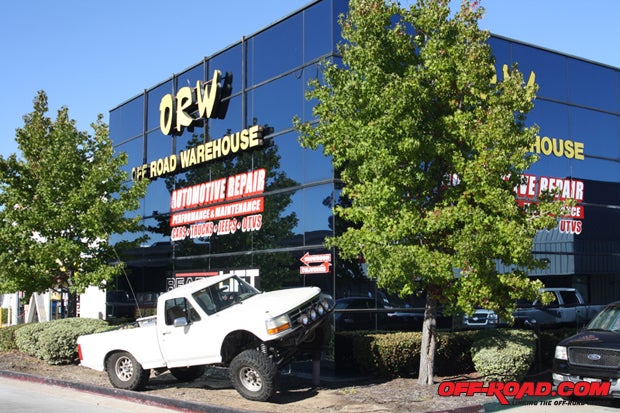
“In any setting where a tire has air underneath it, straps are a good idea,” proclaimed Jeramie Reed, shop foreman at the ORW’s El Cajon location. “Whether it’s the violent full extension of a truck that’s in the air a lot in the dunes, or the slow droop that crawlers and Jeepers deal with, any suspension parts that are operating at the edge of their envelope are at risk.
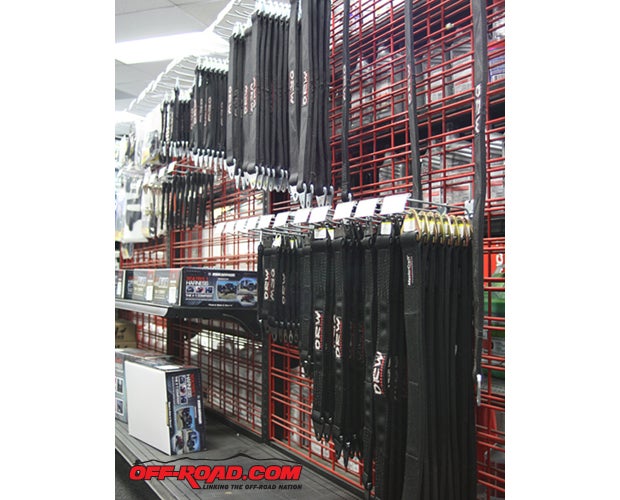
“Straps work so well in this limiting capacity because of their flexibility and stretch – it’s the same reason people use them to pull stuck trucks,” Reed said. “They’re strong, they stretch predictably, to a predictable length, and they don’t lose strength when they go taught.”
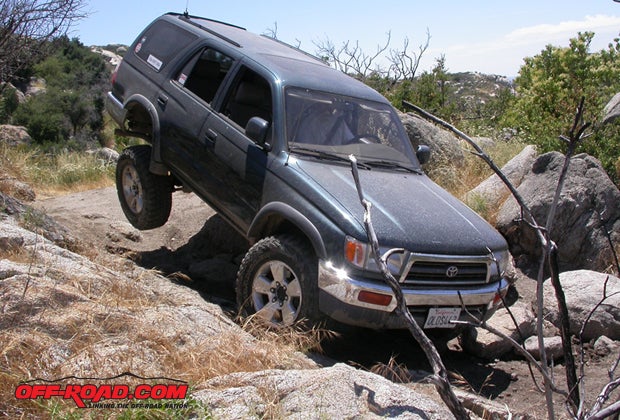
Do You Need to Use Straps?
It’s use-dependent. An urban beater? Mall crawler? Nope. Sure, straps are cool right now, but without hanging a tire, your “need” is mostly “want.” Any off-road vehicle that dangles an angle now and again in trail or race settings should be droop-limited: you’re protecting your investment and controlling vehicle movement. If you lift a corner – and that means anyone, even an autocrosser who’s trying to control body movement around cones – straps can do you good.
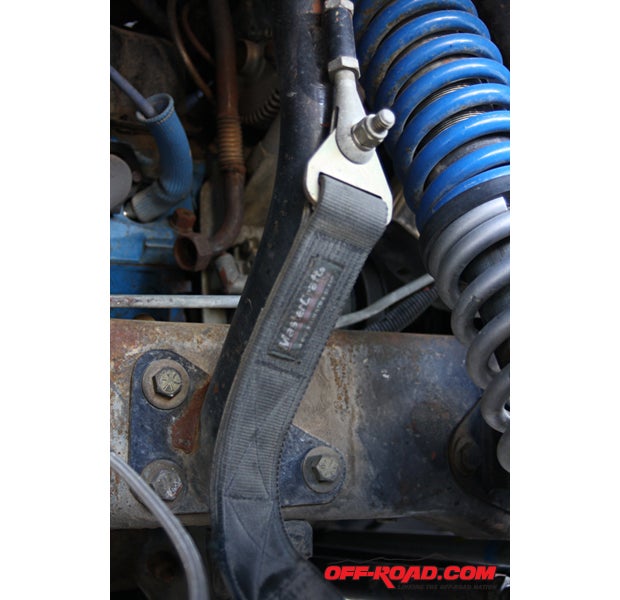
Here’s some key reasons limiting straps are valuable:
- They are inexpensive.
- They don’t interfere with operation of anti-roll bars on independent suspensions.
- Anti-roll bars are not good limiters.
- Neither are shock bottoms.
- CV joints are expensive.
- CV boots work better when the grease is still inside them.
- Brake lines don’t stretch; besides, the lines on your old wagon are all dried out.
- Bushings and ball joints don’t like to pivot to their limits.
- Admittedly, limit straps look cool.
- How many times have you seen bump-stops set incorrectly or incongruent with lifted/extended parts? Straps (set properly) can protect you at full droop.
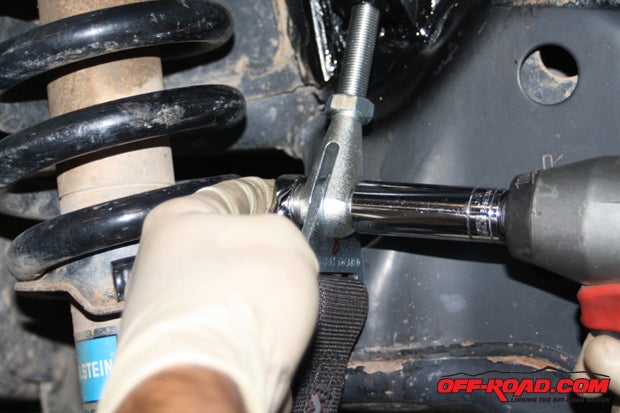
Strategy Basics for Strap Use
The ORW boys usually employ two methods for installing limiting straps: bolt-to-bolt or clevis-to-bolt. One of the ways you’ll see a vehicle strapped is with an adjustable mount, using a threaded clevis attached to a hard-point on the frame at one end, with a fixed bolt at the other. The threaded clevis allows for adjustment of the strap to manage stretching over time, or specific suspension changes that require adjustment.
The second method, which bolts the strap tab to a hard point on the frame and then to a hard point on the axle (or to a bracket mounted to either), is simple, rugged, less expensive, and easier to install. Of course, ease of installation depends on the vehicle. You’ll see bolt-to-bolt straps on live-axle applications a lot, especially on rigs that jump or spend lots of time at full droop. Live-axled installations can be complicated by mounting point issues – the tradeoff of more limber axle behavior is the expanded movements necessary to be accommodated by the straps limiting it. Reed noted that jumpy trucks usually require more frequent inspection of strap condition.
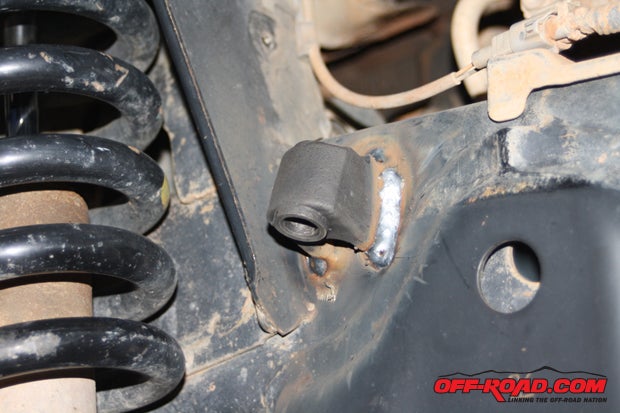
With shorter straps – especially on independent suspensions – the strap is not so much a leash as a collar, mounted closer to the inner pivot point of the suspension arm, and its stretch is a key element of its movement. In both cases, the flexibility – both literally and figuratively – of limit straps means they can be installed in a variety of locations, limited to mounting points and strap movement. That same flexible movement also eases their interaction with other parts – no metal-on-metal clanking or clunking. Of course, there are variations to these methods: off-roaders are nothing if not innovative, and the flexible nature of nylon straps lends to creativity. Again, exotic applications dictate that you pay more attention to their wear patterns.
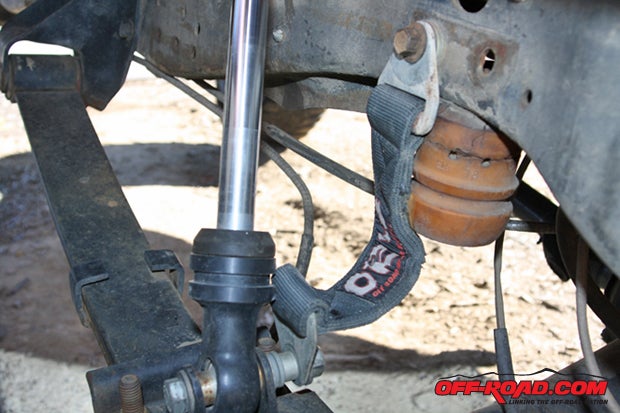
“There’s less pounding and harshness at the strap than you’d think ... so long as the strap is mounted in line with the forces acting upon it instead of being mounted at an angle that doesn’t let the stretch of the strap work,” Reed said. Like a snatch strap, limiting straps have “give” – and that stretch at the last 5-10% of the limit is inherent to their design and eases impacts on the vehicle when nearing full droop. That said, Reed added that “overbuilt” is still core to his strap layouts. You wouldn’t build a truck with pencil erasers as bump-stops, right?
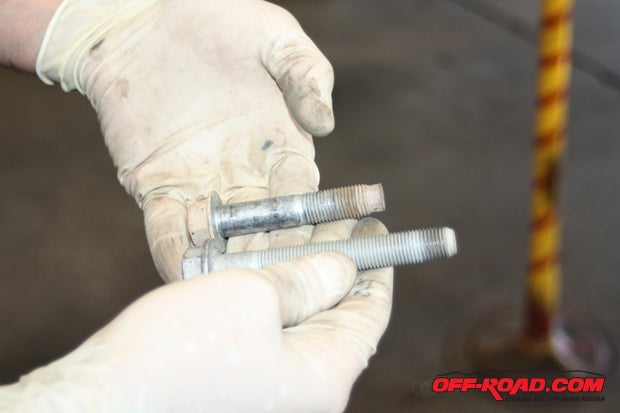
In cases of heavily stressed straps (less than ideal strap alignment, big tires, heavy axles or parts, lots of air time), multiple straps are often employed, either side by side or laid flat against each other and held together with zip-ties or the like. The physics at play in the suspension dictate how much strap will be necessary. Reed reminded us that this is a part of the “art” of strap use: consult an expert on what best suits your intended application.
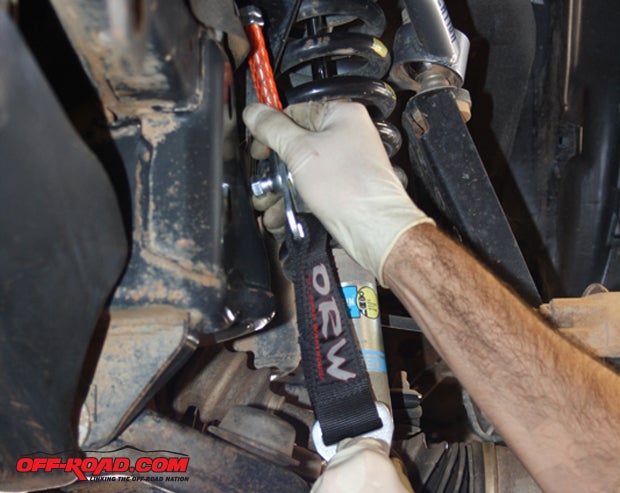
Strap Construction, Necessities
The quality of the straps you’re using matters, especially considering that “quality” is often in short supply with Chinese and knockoff products that are always “a little cheaper” (in every sense). The mechanics at ORW laid out a few of the essential features to check: sewed-in tabs (instead of “plastic-welded”), quad-wrapped straps (this style is more expensive, but they last longer, take more of a beating, and stretch more predictably – all of ORW’s straps are quad-wrapped), and an reputable manufacturer. As for four-ply, we were told there are some applications where builders seek two-ply straps, specifically in cases where they want the strap to stretch more, but it’s important to consider their hastened wear rate when using them.
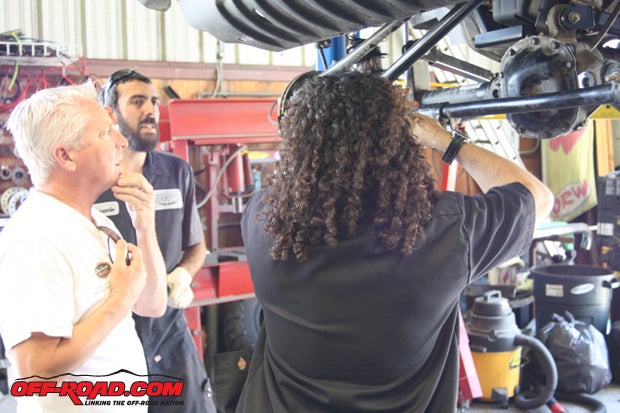
Speaking of, limiting straps need to be treated as a wear item, like brake pads, tires, and your wallet. Watch for fraying or abrasions (and why – are they rubbing or mounted crooked?) and too much stretch (out of adjustment). Stretch alone is only an issue when you can’t adjust for it. Like anything plastic-based, straps have a lifespan, depending on their use: five years is a good place to start, if they’re working right and maintained. UV and/or sun exposure can hasten strap degradation, and grease, fuel and oil are all bad for straps. The nylon in good straps is naturally resistant, but those are caustic chemicals. Any sticky chemical also attracts dirt and sand, which accelerate the breakdown of your straps. While dirt and automotive chemical exposure are inevitable, nylon limit straps can be cleaned with car soap and water – hose them off.
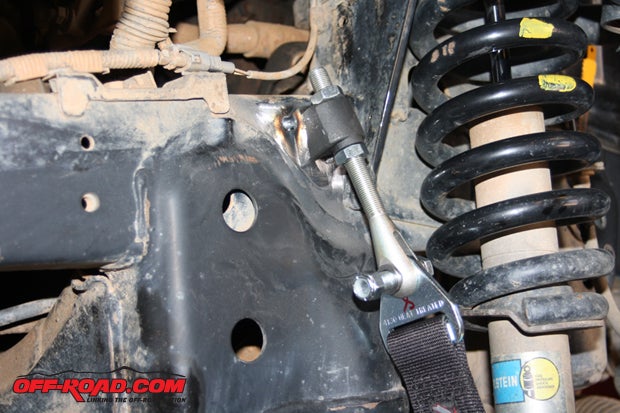
Keep Straps Under Control
- Where you connect straps will make a huge difference in how your suspension moves. Plan, test, plan, test. Like a good dog: you don’t want it pulling on the leash all the time.
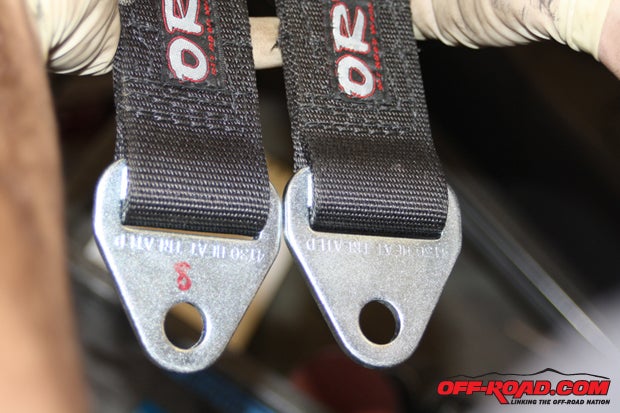
- As mentioned previously, you can also limit suspension movement on purpose – if you’ve got axles that roam too much, or cause vehicle imbalance at full extension, you can reduce that movement on purpose.
- Straps can twist up to 90 degrees during suspension movement with no ill effects.
- If you’re driving a trail rig on the street (or a street truck on the trail), there’s nothing wrong with leaving your anti-roll bars attached when strapped.
- If you do disconnect your anti-roll bars, remember that the truck will handle funkily – this is a good argument for quick-disconnect bar ends.
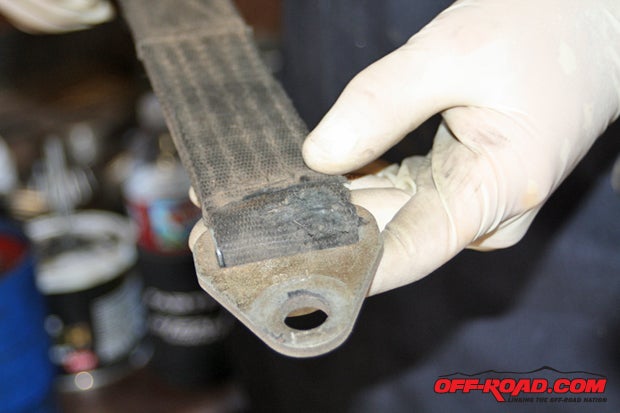
- Limit straps are set to go taught between 5 and 10% before full droop. With shorter straps, remember to figure their stretch in to the final length (when adjusting at the clevis). You want them to stop all travel before hitting bottom.
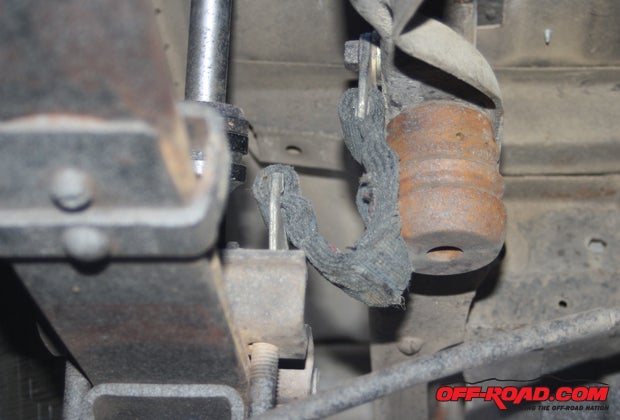


 Your Privacy Choices
Your Privacy Choices